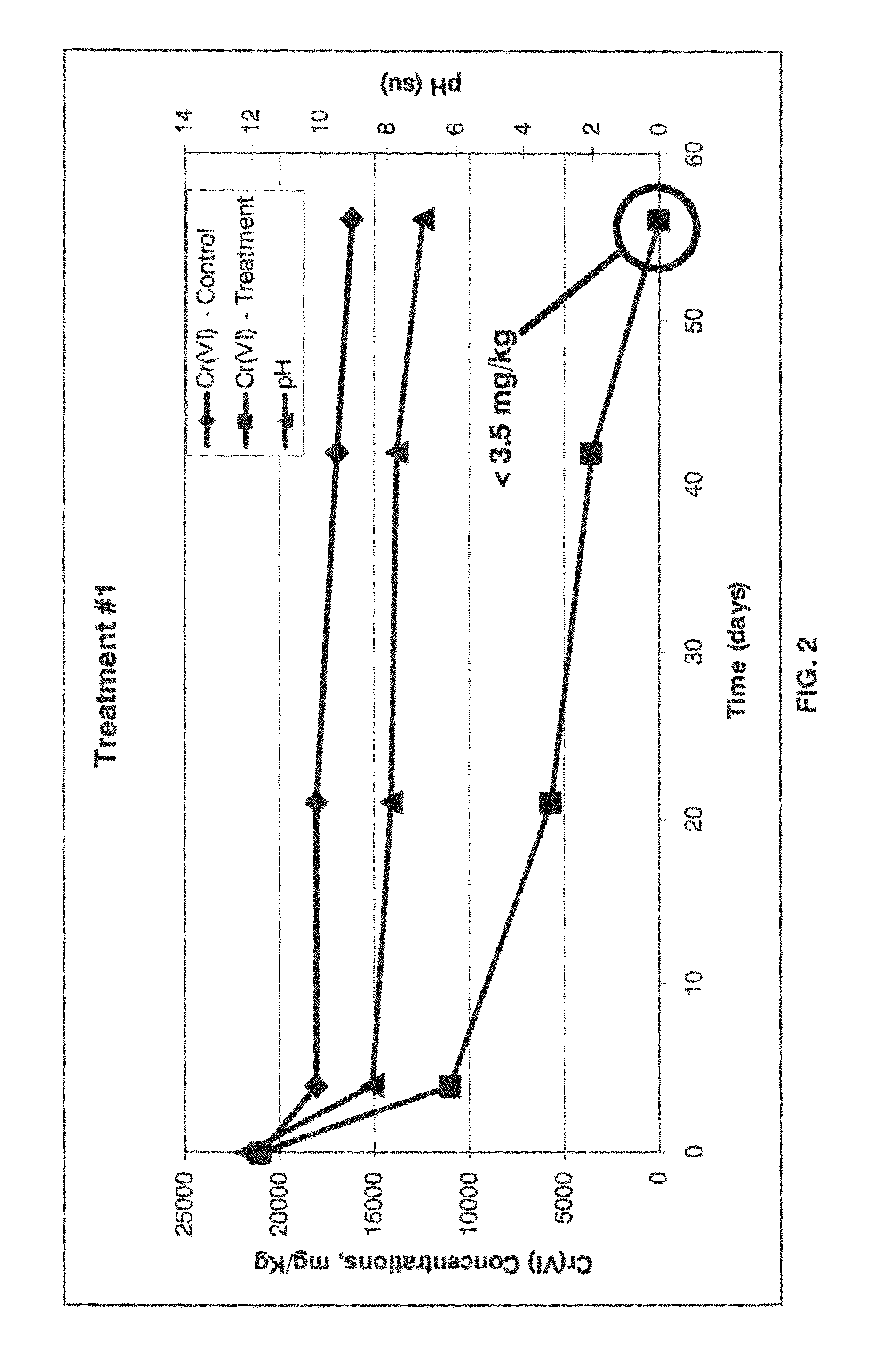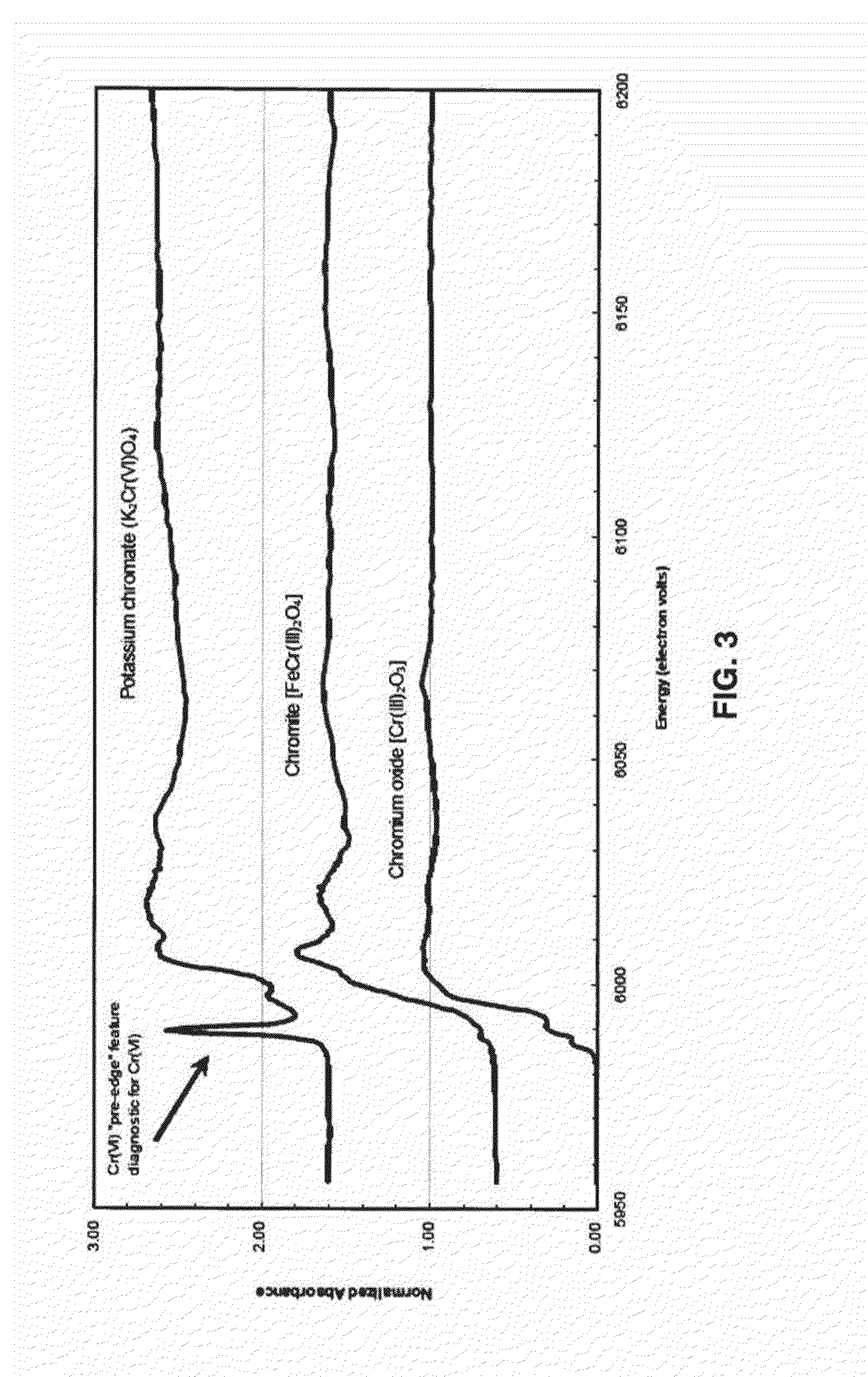Method for biogeochemical stabilization of chromate-impacted solids
a biogeochemical and solids technology, applied in the direction of chromium compounds, chemistry apparatus and processes, molybdeum compounds, etc., can solve the problems of ineffective process for leaching all of the chromate from the copr, long-term environmental threat of residual cr(vi) associated with the copr, and difficult treatment of solids impacted by hexavalent chromium/cr(vi) , to achieve the effect of prolonging the residence time o
- Summary
- Abstract
- Description
- Claims
- Application Information
AI Technical Summary
Benefits of technology
Problems solved by technology
Method used
Image
Examples
example
[0062]This example is intended to detail the results of testing of the process of the invention, however the description of this example is not intended to limit the scope of the invention in any way. Samples from two different areas were received from a site that contains COPR historically used as fill. These samples represented vertically integrated composites of material collected over a 15 foot interval in the subsurface, and were designated GA1 and GA2. The material from each was used for proof of concept treatability testing in the laboratory according to the following steps:
[0063]Step 1: Homogenization.
[0064]Samples were homogenized through hand mixing and crushing to create substantially “uniform” composites.
[0065]Step 2: Baseline Analysis.
[0066]The homogenized composite samples were analyzed in duplicate for total Cr and Cr(VI), TCLP for total chromium, total organic carbon, percent solids, and various other metals (aluminum, calcium, magnesium, and iron). Results are summa...
PUM
| Property | Measurement | Unit |
|---|---|---|
| pH | aaaaa | aaaaa |
| pH | aaaaa | aaaaa |
| pH | aaaaa | aaaaa |
Abstract
Description
Claims
Application Information
 Login to View More
Login to View More - R&D
- Intellectual Property
- Life Sciences
- Materials
- Tech Scout
- Unparalleled Data Quality
- Higher Quality Content
- 60% Fewer Hallucinations
Browse by: Latest US Patents, China's latest patents, Technical Efficacy Thesaurus, Application Domain, Technology Topic, Popular Technical Reports.
© 2025 PatSnap. All rights reserved.Legal|Privacy policy|Modern Slavery Act Transparency Statement|Sitemap|About US| Contact US: help@patsnap.com



